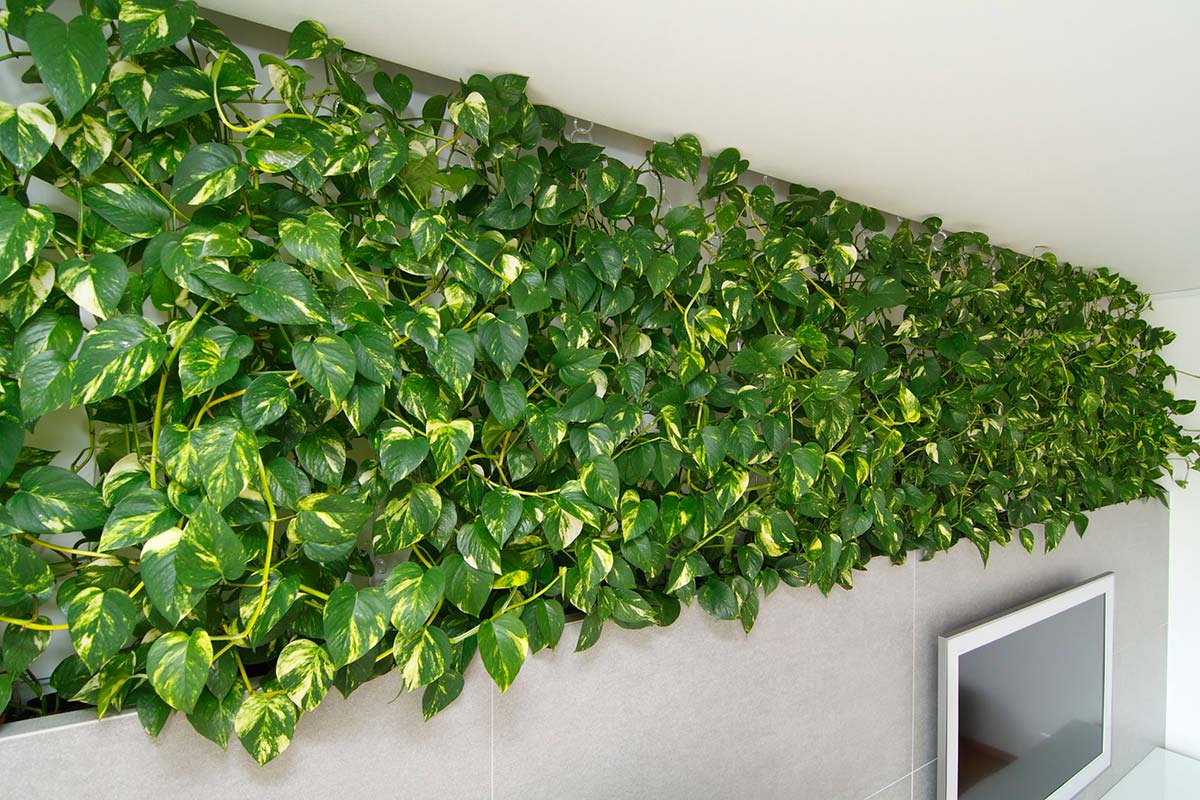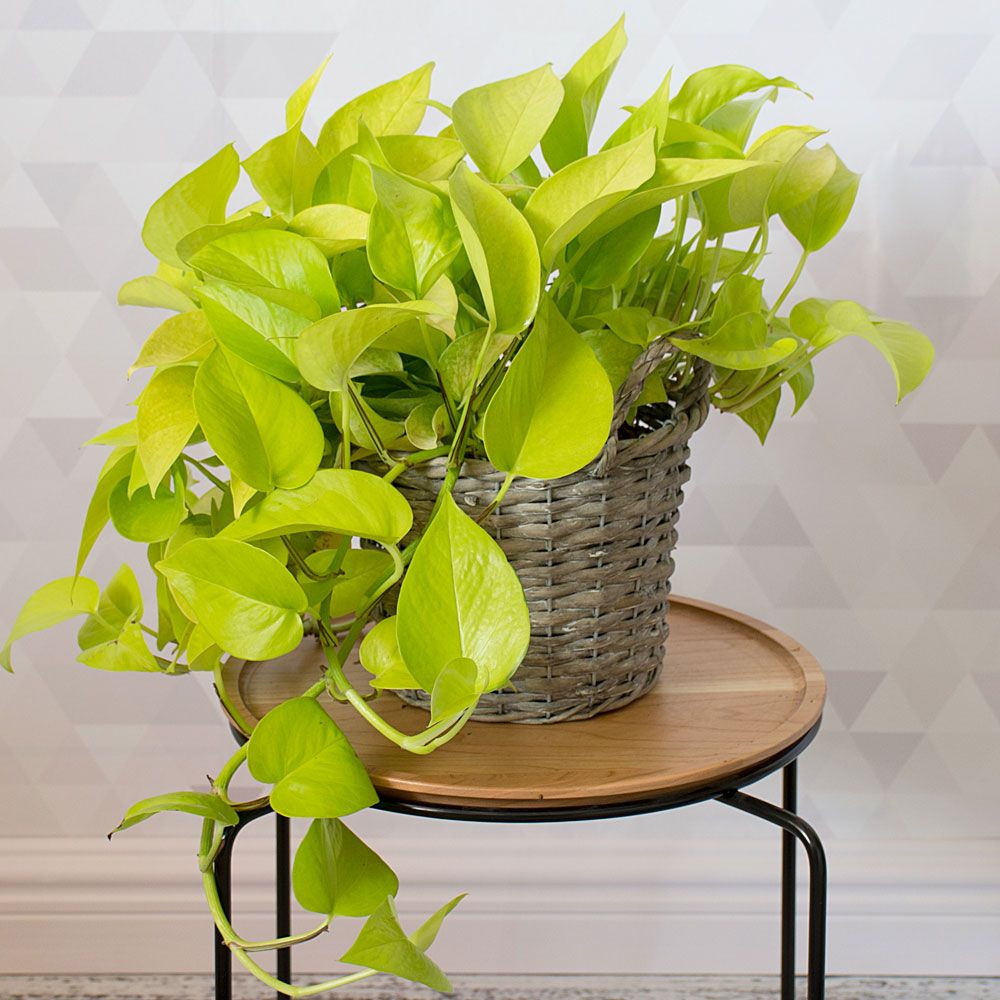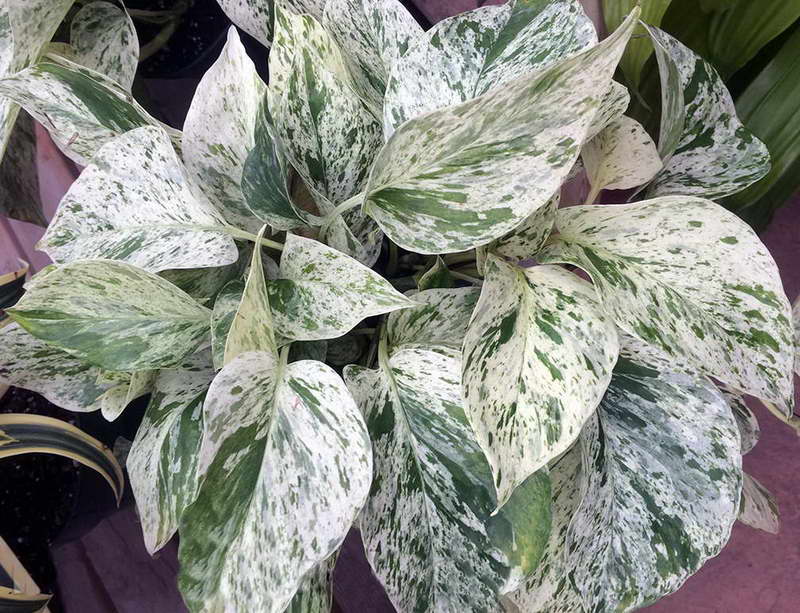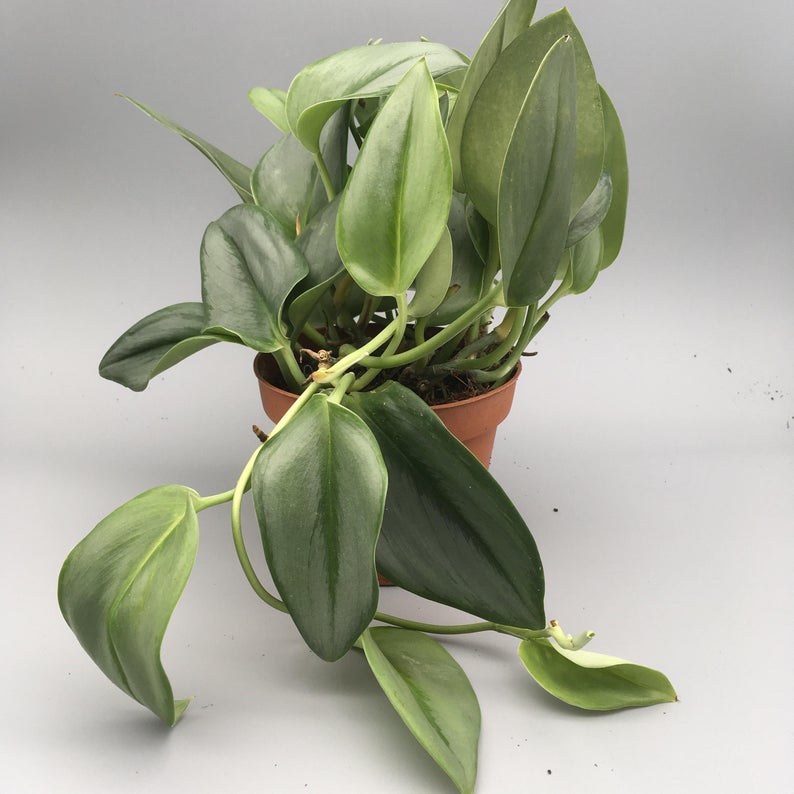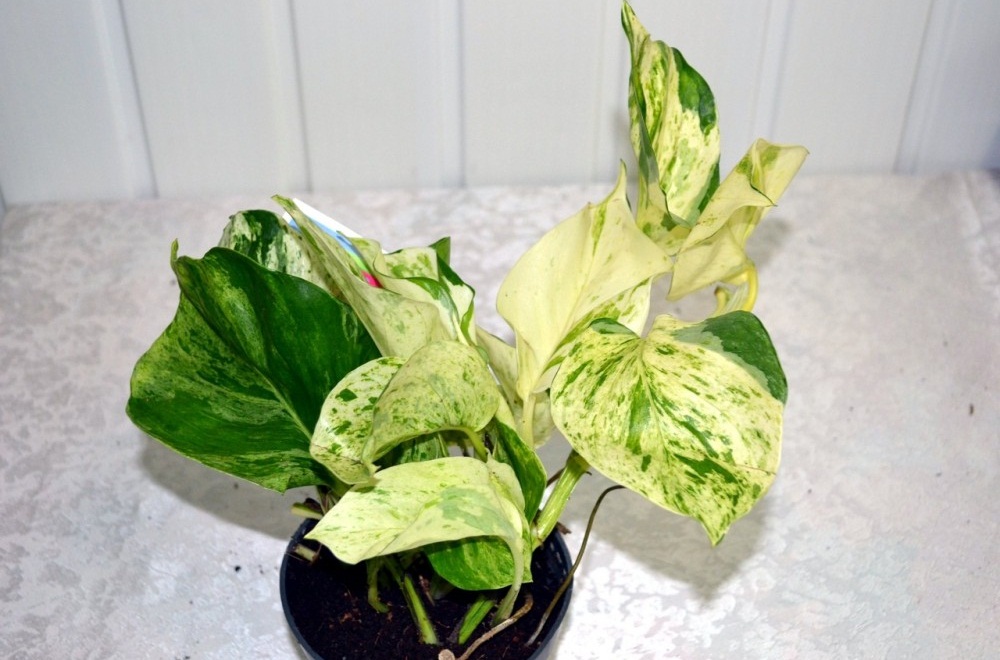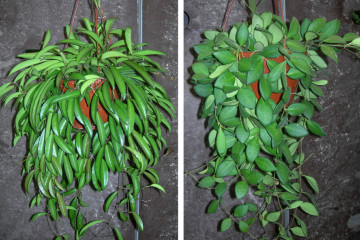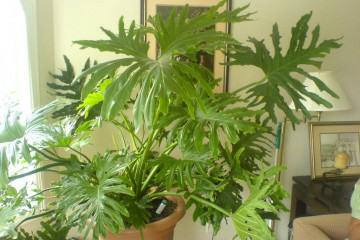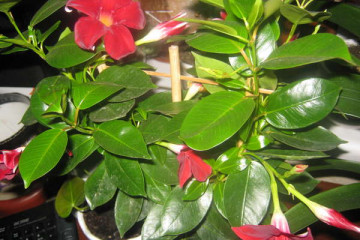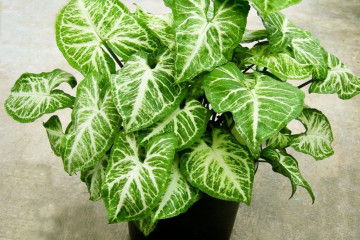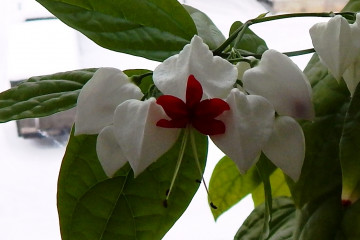Scindapsus golden - poisonous or not, skin burn from scindapsus
Content:
Liana scindapsus belongs to the Aroid family (Araceae). The place of origin of the culture is the tropical forests of Southeast Asia. The genus includes about 25 species of lianas. The name comes from the Greek word "Skindapsos", which means "ivy-like tree". Popular names include pictus, muzhegon, widow ivy, golden potos. In the wild, liana can climb trees to a height of 15 meters. As a home culture, Scindapsus attracts attention with its oval-shaped leaves with a variegated pattern. One of the most common types of liana is the golden scindapsus.
Scindapsus golden: description and features
In the wild, it is a semi-epiphyte liana. The root system of the scindapsus is simultaneously represented by 2 types - fibrous underground and aerial. Thanks to its aerial roots, the vine can climb the trunks of trees over long distances and grow for several kilometers. In some countries and regions (for example, Florida, Sri Lanka), it takes up so much space that it has to be fought with as a parasite that destroys the ecology of the area.
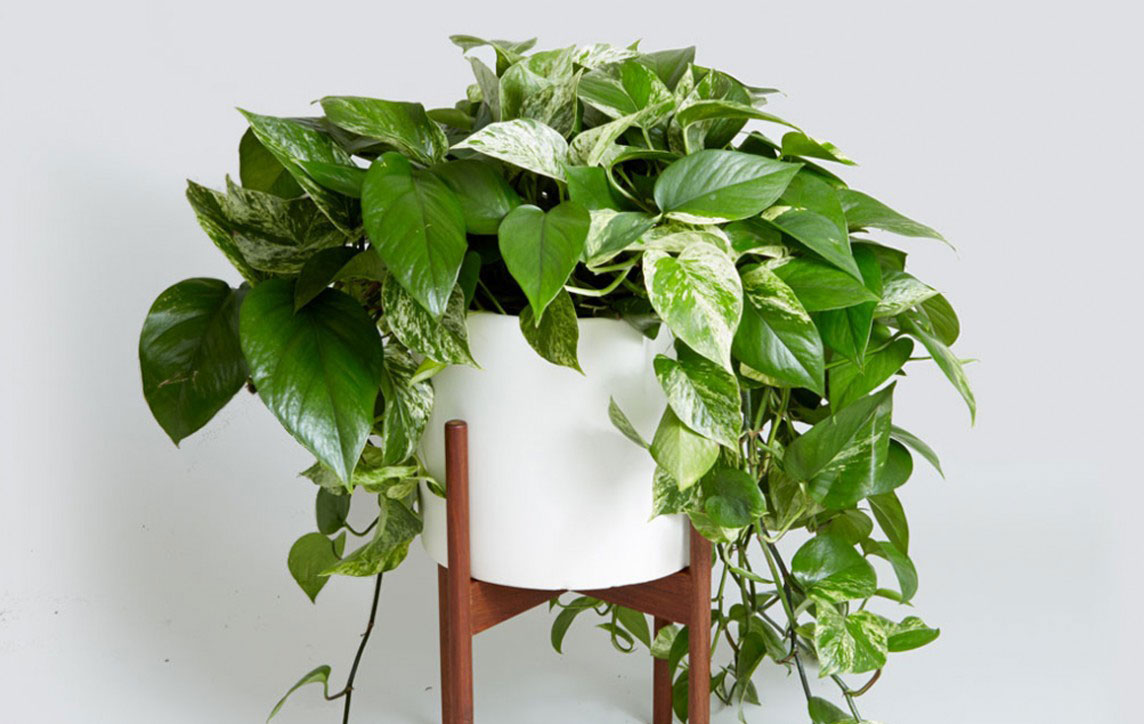
Scindapsus is a spectacular ampelous plant, shoots easily cling to the support and can reach a length of 3 m
In home floriculture, liana acts as an ornamental climbing culture. The plant is valued for its lush foliage with a glossy sheen and unpretentious care.
The arrangement of oval-shaped leaf plates is alternate. The color of the foliage is bright green with a pattern, the surface is shiny and fleshy to the touch.
During the flowering period, a small inflorescence is formed, resembling an ear of corn, wrapped in a stipule. At home, the vine almost never blooms.
The following varieties of golden scindapsus have the greatest decorative effect:
- Tricolor. The surface of the leaf plates has greenish, beige and dark green stains;
- Scindapsus Marble Queen (The Marble Queen). It is characterized by bright foliage, almost completely white. There are green blotches on the surface, due to which the leaves have a variegated appearance. The drawing resembles thin strokes or streaks;
- Golden Queen (Golden Queen). The color of the foliage is predominantly green with yellow (as the name implies) and chaotically scattered specks;
- Neon. Differs in lengthwise bright yellow leaves;
- Scindapsus N Joy. The color of the leaves is green with a white border and blotches of the same color.
Types of scindapsus
Common types of scindapsus:
- painted. The homeland of the flower is Malaysia. It is characterized by warty shoots, dense foliage of a rich dark green color with small but numerous white spots. The foliage is heart-shaped. The most popular variety is Agirees;
- golden (scindapsus golden).The leaves have a characteristic golden finish. The variety has several popular varieties that differ in color.
- Siamese. The plant has large variegated leaves of white-green color;
- perakensis. A characteristic feature is elongated leaves with pointed ends. In the wild, the length of the stems can reach 60 m, and when grown at home - from 10 to 15 m. Liana prefers warm air with high humidity.
Home care
Regardless of which species the liana belongs to, be it spotted, Siamese, perakensis or golden scindapsus, home care is almost always the same. In all cases, it is enough to follow simple rules and follow the recommendations for growing a flower at home.
Lighting
Scindapsus prefers a shaded area or partial shade. It is recommended to place the flower 2 m from the south window. Species and varieties with monochromatic foliage need less light than variegated varieties.
Temperature
The recommended temperature regime in the warm season is from 18 ° C to 24 ° C, in the winter period - from 13 ° C to 16 ° C (the permissible minimum limit is 12 degrees).
Watering and humidity
Liana requires systematic soil moistening in moderation. Watering time is determined by the degree of soil drying: when the soil dries out a few centimeters in depth, the substrate must be moistened. In spring and summer, the frequency of watering is 1 time in 4-5 days, in winter - 1 time in 7-8 days.
Air humidity should be about 60%. In the warm season, it is recommended to spray the plant 3-5 times a week. In winter, the vine should be located away from heating devices and regularly wipe the foliage with a damp cloth. The support to which the scindapsus is attached is also useful to spray. It is desirable that wet expanded clay is present in the pan of the pot.
Top dressing
It is necessary to fertilize the crop during the entire growing season. In spring and autumn, the frequency of dressing is 1 time in 15-20 days, in winter it is reduced to 1 time in 6 weeks. Liquid mineral complexes should be used as fertilizer in the amount of 1/2 of the dosage recommended by the manufacturer.
Reproduction of scindapsus
Liana is propagated in three ways:
- layering;
- cuttings;
- by dividing the stems.
To do this, the apical stems of the flower, which are obtained as a result of the formation of vines, are placed in a vessel with water or planted in the ground. In order for the cuttings to take root, it is important to observe the following conditions:
- each stem should have 2-3 leaves;
- good illumination;
- minimum air temperature - 22 ° С.
Cuttings are cut at an angle of 45 °, then the cut sites are treated with a special agent to enhance root growth. Next, the cuttings are planted in a soil consisting of sand and sphagnum, or in a glass of water (you first need to throw a tablet of activated carbon into it to disinfect and prevent the seedling from decaying). Polyethylene is stretched over the seedlings or covered with a glass jar. Rooting will take place in 15-20 days.
Reproduction by layering involves the receipt of new copies due to the rooting of air roots. This requires:
- put a container with soil next to the main pot;
- direct part of the shoot into it and fix it in this position (you can use a hairpin);
- sprinkle the stem with earth;
- roots will appear after a few weeks at the point of contact between the soil and the shoot. After rooting, the stem can be detached from the parent plant;
- continue to grow the young specimen in a new pot.
Transfer
A young culture needs an annual transplant. An adult plant is transferred to a new pot at least once every 2-3 years. The procedure is recommended to be carried out at the beginning of the growing season (i.e., in February-March).
The planting pot should be low and wide. In the future, this will allow pre-rooted cuttings to be planted to the liana to make the bush even more lush. The soil mixture for transplanting should include the following components in equal amounts:
- sand;
- leafy soil;
- humus;
- peat.
Harm from scindapsus
It is impossible to say unequivocally whether the scindapsus is poisonous or not. On the one hand, it is impossible to get a skin burn from scindapsus due to touching a vine. On the other hand, experts do not recommend keeping a flower in an apartment if pets live in it. Having tasted any part of this plant, the pet can get irritation of the mouth, lips, tongue. Eating a flower is fraught with increased salivation, nausea, vomiting, and diarrhea.
Popular varieties
In Russia, the following varieties of scindapsus are most often planted:
Scindapsus Painted
He is the scindapsus pictus, spotted or variegated. The stem of the flower becomes covered with warts over time. The form of bright green leaves located on short petioles, ovoid.
Scindapsus N Joy
The variety was bred relatively recently by Dutch breeders. The leaves are dense, numerous, hard, bright green, covered with silvery spots.
Scindapsus Marble Queen
Heart-shaped leaves are located on long petioles, covered with silvery spots and stripes.
Scindapsus Exotic
An unusual hybrid that boasts not only a silvery pattern, but also embossed leaves, consisting of two parts, one of which is larger than the other (because of this, the central vein is slightly displaced to the side).
Scindapsus Moonlight
A very rare variety. The width of the bush is about 20 cm.
Scindapsus Happy Life
The span of the bush reaches 20 cm.
Scindapsus is a very beautiful tropical vine. Due to its decorative properties, a variety of species and varieties, it is actively used to decorate premises. The rich foliage is able to bring not only aesthetic pleasure, but also effectively purify the air.
